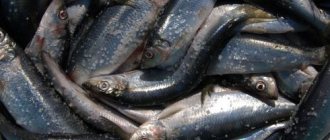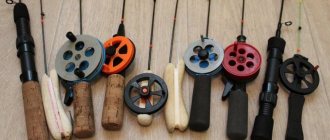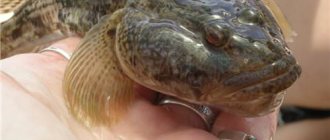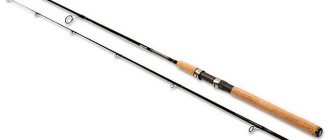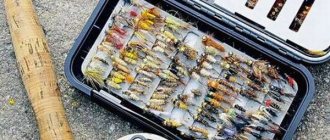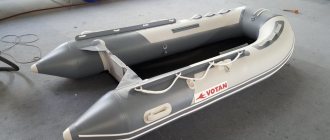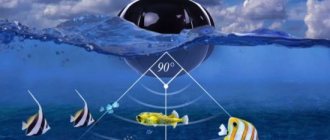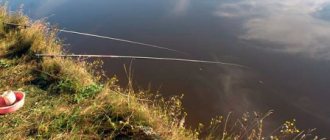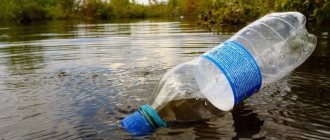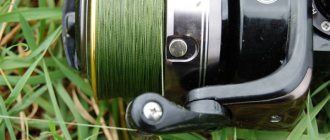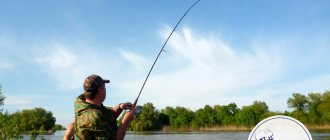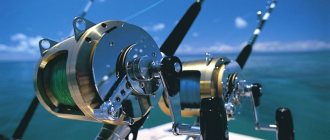The goby is a predatory fish. It is found in both fresh and salt water. There are a large number of varieties of this fish. Goby fishing has always been considered a difficult but exciting activity. To succeed in this matter, you need to know several subtleties of this type of fishing.
The goby gear used by experienced fishermen can be varied. The choice depends on the fishing conditions. The fisherman's preferences and skills also matter a lot. To choose the best gear for this predator, you should carefully read the advice of experienced fishermen.
Features of fishing for goby
Tackle for goby is very diverse. This is due to the different options and conditions for catching this fish. The goby is a predator. It feeds on fry. The main habitat of this fish is the bottom areas of reservoirs near the shore.
The goby is found in both salt and fresh water. This type of fishing in the Azov and Black Seas is popular among experienced fishermen. Various species of gobies can also be found in many rivers.
The predator bites best in summer and spring. In the autumn, the goby is also active. However, the choice of bait at this time of year is especially careful. In winter, the goby goes deeper. Therefore, it becomes quite difficult to catch him. On the Sea of Azov, the goby fishing season begins almost at the end of February. If the water is not frozen, you can go fishing. Success will depend on choosing the right gear.
Goby fishing - time and place, gear, bait
The river and sea goby, also popularly known as the plane tree, is a popular object for sport and amateur fishing.
This small fish is often the first trophy of novice fishermen, since it lives in shallow water and is not very demanding on the composition and purity of water, i.e., in its habitat it is caught in almost any body of water. Gobies belong to the order of perciform fish; there are many species of them - up to two thousand. Almost all of them live in the southern inland seas, such as the Mediterranean, Black, Azov Sea, as well as the Caspian Sea. Many species of gobies are brackish water, that is, they can live in both salt and fresh water, so they are often found at the mouths of rivers flowing into the sea, in the brackish estuaries of Donbass and Kuban. Along the Don, gobies sometimes rise all the way to Voronezh. In the rivers flowing into the Azov, Black and Caspian Seas, the goby is one of the most common fish.
Goby, also known as a plane tree
Goby behavior
When choosing gear for a goby, it is necessary to take into account the behavioral characteristics of this fish. The predator prefers coastal areas with an abundance of aquatic vegetation. He also likes to hide under snags, stones or in burrows in the sand, which the goby makes on its own.
If the weather is windy or the current is strong enough, the predator goes deeper. Fishing from a boat will be successful at this time. But on calm, sunny or cloudy days, the goby comes close to the coastline. Here he hunts schools of fry. In such weather, it is recommended to catch goby from the shore.
In complete calm there may be no bite at all. The same situation occurs during algae blooms. Plants block oxygen access. At this time, it will be almost impossible to catch a bull here.
A large goby bite is detected in the morning at dawn. During the day, its activity decreases noticeably. A few hours after lunch, you can throw the gear into the pond again. The bite may not stop even at night.
Goby fishing at sea
In the warm season, gobies swim in large numbers in the coastal zone without making noticeable migrations. These small predators often hide under stones or in grass, buried in the sand.
Weather can significantly affect the location of gobies and their activity. When the heat is too strong, as well as during storms, the fish move away from the coastline to depth.
In calm weather at normal temperatures, gobies often swim near the shore. In winter, as already mentioned, this fish also moves away from the coast.
In the Sea of Azov there are more than 10 species of gobies, among which the most common is the so-called round goby. Also found are the bull goby, bighead goby, sandpiper goby, sculpin goby and others. The largest individuals, as a rule, belong to the species of gobies.
In the Black Sea, goby is also excellently caught. It is worth looking for it, first of all, in places with a rocky bottom at a relatively shallow depth.
Types of tackle
Tackle for catching goby on the sea or river can be very diverse. Most often, experienced fishermen use float, bottom varieties, as well as casting or spinning rods.
Specialized stores offer a wide selection of gear for bulls. For this type of fishing, a fishing rod with the simplest design is quite suitable. Its weight should be light. It is better to give preference to comfortable fishing rods. Experienced fishermen can create their own gear for catching gobies.
When choosing a fishing rod, you need to take into account the time and place of fishing. For each type of blank, it is recommended to use a fishing line with a certain cross-sectional size, as well as special hooks. The entire system should provide comfortable fishing. Subsequently, it will be possible to make gear yourself. In this case, it will be possible to take into account a number of the angler’s requirements, the peculiarities of his style of fishing out of water.
Where to catch goby in winter
Winter goby fishing takes place on estuaries, since you won’t find it in the sea in coastal areas; it goes to the depths to spend the winter. And sea ice, even if it forms, is not particularly reliable and you can’t go out on it unless you want to end up in cold water.
When catching goby in estuaries in winter, it is enough to move a couple of meters from the shore and start fishing at a very shallow depth. In one hole you can catch several bulls, then you should move on. It’s rare that you can catch quite a few three specimens from one hole. So be prepared for a lot of drilling and running. It is advisable to drill holes every 3-5 meters.
If you are aiming to catch the largest individuals, then you will have to move further from the shore, about 100-200 meters. At such a distance from the shore, you need to look for more holes, depressions and edges in order to find hidden large bulls.
Fishing conditions
The choice of gear depends on the fishing conditions and time of year. It is also important to choose the right gear manufacturer. There are tackles for catching goby from the shore or from a boat. The first option is a small, lightweight rod. The equipment must be made using special technology. Otherwise, the bull can be scared away.
In summer, rods with a line cross-section of 0.3 mm are used. The hooks for the bull should be number 6 to 10. The lead pellet mounted on the line should not be installed above them. This will cause a lack of bite. The pellet should be located immediately next to the hook.
In winter, the fishing rod should be short. The fishing line may be smaller in diameter than what was used in the summer. When choosing equipment, it is necessary to take into account the fishing style, as well as the characteristics of the rod. This will allow you to select all the components correctly.
Main varieties
Today there are 20 varieties. The great diversity is due to its distribution throughout the world. Most of the species live in temperate regions. Let's look at the most common types.
Round goby
A typical representative of the goby family. General characteristics:
- length is 15–25 centimeters;
- large caudal fin;
- there is a dark spot on the body;
- can live in very salty water;
- weight is 100–200 grams;
- There are high fins on the back;
- huge numbers;
- not picky about food (worms, fry, etc.);
- spawn in spring;
- lives at a depth of 2–10 meters;
- the body is oval in shape;
- massive head darker than the body;
- leads a gregarious lifestyle.
Fish can be used to prepare delicious dishes. Large numbers are observed in the Black and Azov Seas.
Goby
It lives primarily in salt water. Bubyr belongs to the euryhaline species. General characteristics:
- light gray coloring;
- elongated body;
- there are small dark spots on the sides;
- large eyes;
- bottom lifestyle;
- flat snout;
- elongated caudal peduncle;
- the teeth are shaped like cones;
- spawn in the spring (portioned spawning);
- length varies from 12 to 25 centimeters;
- the dorsal fin has 6 rays;
- big head;
- the entire body is covered with special ctenoid scales;
- dark stripe on the back;
- no swim bladder;
- prefers clean water;
- coloring depends on condition;
- upturned jaw;
- the mouth is always open;
- many red spots;
- weight varies from 20 to 300 grams;
- There is a longitudinal pattern on the back.
Bubyr habitats:
- estuaries;
- lagoons;
- sandy bottom;
- bays.
Distributed in the Marmara, Azov and Aegean Seas.
Goby-tsutsik
This variety is popularly called blunt-nosed and marbled.
Tsutsik lives near the seashore. Favorite places are coastal sea areas and small bays. In addition, Tsutsik is actively developing rivers.
The main source of nutrition for the tsutsik are various invertebrates. For example, worms, various larvae.
Habitats:
- Aegean Sea;
- Volga river;
- Sea of Azov;
- various coastal lakes;
- Caspian Sea basin, etc.
It also happens: Loach: description, distribution, lifestyle and method of catching
General characteristics:
- yellowish-gray coloring;
- bottom lifestyle;
- sedentary lifestyle;
- life expectancy is 2–3 years;
- length is 5–12 centimeters;
- no swim bladder;
- spawn in the summer (portioned spawning).
bighead goby
This is a little-studied species.
- the body has an elongated shape;
- the anterior part of the body is thickened;
- there are two dark spots on the head;
- grayish-brown coloring;
- there are five transverse stripes on the back;
- prefers rocky soils;
- massive lower jaw;
- there is a dark spot on the tail;
- massive flattened head;
- length is 15–22 centimeters;
- the head is covered with special cycloid scales;
- varied diet (molluscs, fry, various larvae);
Habitats:
- Black Sea;
- various estuaries;
- Caspian Sea.
Sculpin Goby
A very common and original fish. The sculpin lives in small rivers and tributaries.
- massive mouth;
- all fins are covered with small spots and stripes;
- takes refuge under the poplars;
- sedentary lifestyle;
- developed pectoral fins;
- spawn in spring;
- length varies from 6 to 12 centimeters;
- coloring directly depends on the location;
- shortened body;
- wide head;
- big eyes.
Rotan goby
Mainly lives in freshwater reservoirs and rivers. Rotan is popularly called rooster and greenfly.
- length is 12–25 centimeters;
- sedentary lifestyle;
- large head and eyes;
- excellent survival rate;
- adapts to new conditions in the shortest possible time;
- high gluttony and fertility;
- weight varies from 200 to 300 grams.
Distributed in rivers, lakes, streams, ponds, creeks and swamps.
Grass goby
A typical representative of the goby genus. Lives mainly in salt water. Spawns in spring (April, May).
- small dark spots on the sides;
- brownish-greenish coloring;
- elongated body;
- length is 17–25 centimeters;
- the whole body is covered with special scales.
Sandpiper Goby
This is a very voracious fish. It feeds on caviar, mollusks, worms and so on. The sandpiper can be found in large rivers and seas.
- a long tail;
- yellow-gray coloring;
- omnivorous;
- loves warm water;
- prefers the middle current;
- powerful, longitudinal body;
- there are small dark spots on the fins;
- massive mouth;
- quite large head.
Goby
An incredibly hardy fish that lives in sea basins and estuaries. The gorlach is a predator.
- leads a gregarious lifestyle;
- the whole body is covered with dense scales;
- large, streamlined body;
- migrates in summer;
- big head;
- there are dark stripes on the head;
- the length of an adult is 15–20 centimeters;
- survives in extreme conditions.
March goby
Martovik is a predatory fish that feeds on fry, mollusks and worms. Martovik can be found in the Caspian and Black Seas.
- thickened head;
- the weight of an adult varies from 350 to 500 grams;
- grayish-brown coloring;
- rounded pectoral fins;
- on the back there are two dorsal fins;
- some parts of the body are not covered with scales;
- big mouth;
- life expectancy is 6–7 years;
- length is 25–30 centimeters.
Fishing rod
Among experienced fishermen, fishing for the Azov goby is especially famous. Even the simplest types of gear are suitable for sea fishing. Often, fishermen choose the most ordinary float rod.
The form should be light in this case. To make the fishing process convenient, it is recommended to select a rod with a length of 2.5 m. In this case, a blank with a slow action is optimal. This will make it easy to fish the voracious predator out of the water.
The size of the line doesn't matter much. Most often, a monofilament thread with a diameter of 0.8 mm is chosen for these purposes. However, hooks should be selected large. Otherwise, the fish swallows them completely. The float should be chosen in the shape of a pear. This ensures its good stability even in rough seas.
Experienced fishermen advise attaching two hooks to the equipment at once. In the Sea of Azov it is often possible to get two fish out of the water at once.
Donka
The best tackle for goby in the Sea of Azov and other bodies of water belongs to the bottom varieties. It could also be a trick. It requires about 15 m of fishing line. The thread thickness should be 0.7 mm. The hook needs to be attached to its end. Its size should be No. 10.8.
After 20 cm it is necessary to secure the load. A lead plate is ideal for these purposes. Its dimensions can be 3x3 cm. The plate is rolled into a tube. After another 20 cm, another leash and a second hook should be secured. The weight of the load directly depends on the thickness of the fishing line.
According to the law, a fisherman can fish using two donks at the same time. They can have up to 3 hooks. Experienced fishermen take with them another 15-20 hooks numbered 6-7 as a reserve.
The rod must be strong enough to provide good casting distance.
Tackle for catching gobies
Classic equipment for catching gobies consists of the following components: main line with a diameter of 0.3-0.4 mm, 3-4 leashes (diameter 0.2-0.25 mm), a small sinker weighing about 50 g, and hooks numbered 7 or 8 with an extended fore-end. A sinker is tied to the end of the fishing line, below which a leash with a length of 15-20 cm is attached. Several more leashes are tied above the sinker, at a distance of 25-30 cm from each other.
Gobies love to pull hooks with bait under stones, which is why snags and subsequent breakages of gear often occur. For this reason, it is advisable to take several ready-made equipment with you, and be sure to have spare hooks, sinkers, and fishing line in your arsenal.
Spinning
Catching a goby from the shore can be done using a spinning rod. In this case, it will be possible to make long casts. The tackle for a goby from the shore should be about 2.5 m long. If fishing is done from a boat, it is recommended to use a form up to 2 m long. The choice also depends on the height of the fisherman and his preferences.
Spinning will allow you to fish a fairly large area of water from the shore. Targeted casts will allow you to deliver the bait directly to the goby. Using a spinning rod, you can carry out bottom fishing or fishing on a motor boat.
The rod test should be 5-10 g. In this case, the thickness of the fishing line can be from 0.3 to 0.5 mm. Leashes should be made of thin monofilament or braid. Their thickness can be about 0.2 mm. To carry out wiring, you can use vibrating tails.
How to do it yourself?
“Elastic band” tackle in working position when fishing from the bottom
Tackle “Rubber” when fishing “on top”
Recently, a tackle called an “elastic band” has become very popular. This type of bottom tackle has proven itself to be the best, showing excellent results. It resembles a hook, but here, between the weight and the fishing line, an elastic band is attached.
Making such gear is not at all expensive and every fisherman can do it.
Necessary materials:
- Approximately 40 meters of monofilament , the diameter of which is 0.4 millimeters. You will need it for the main line.
- A fishing line with a diameter of 0.1 millimeter is useful for leashes. One leash should be no more than 15 centimeters long.
- Hooks with a sufficiently long fore-end , which provides a reliable hook - 2 pieces.
- Elastic band – about 5 meters.
- Insulating tape.
- Reel for fishing line.
- Cambric. You can use a piece of wire insulation, having previously selected the required color.
Making an elastic band will require very little time and effort:
- Having previously insulated the reel , we wind the main fishing line onto it.
- At the end of the fishing line , make 5 stoppers to secure the leashes together with the hooks. The distance between them should be about 40 centimeters. We equip each stopper with 2 ordinary nodes, keeping a distance of 1 centimeter between them.
- Then, you should thread the fishing line into the cambric , making a kind of loop, to which you subsequently need to tie an elastic band. IMPORTANT! Under no circumstances should the rubber band be tied directly to the fishing line, as this will cause it to chafe.
- We tie one end of the elastic bands to the loop , and the second - through the cambric to the rope.
- We tie the rope to the load. It can be an ordinary stone.
- Now, we need to make leashes. Tie the hook to a fishing line no more than 15 centimeters long, making a loop at the other end. We put the cambric on the shank of the hook.
- the resulting leash between the stoppers located on the fishing line.
The tackle is ready!
Next, you should cast the load, pull the fishing line to the shore and, having baited the hooks, release it back in the same way.
The line must be taut in order to clearly see the bites. Since the plane tree spends most of its time in the stones, with active fishing during one day, you can lose about 20 hooks.
With a good bite, using 2 rubber bands, you can catch more than 5 kilograms of gobies.
Bait
Tackle for catching Azov goby will be useless without the right choice of bait. Especially in autumn, the predator does not recognize bait. You will need to prepare various baits. The most popular varieties are the earthworm or dungworm. The bite in this case will be strong.
Sea fishing can be carried out with bait in the form of shrimp, mussels or other shellfish that live in the local waters. Pieces of fish and meat are also suitable. They are cut into cubes. The size of all sides should be 1 cm. Next, the bait is put on the hook. The sting should come out a little from the meat.
If you are fishing from a motor boat, you can use edible twisters. Vibrating tails in neutral colors are also suitable. However, experienced fishermen claim that the goby bites especially well only on edible bait in the form of meat or fish.
Favorite baits
Since the goby is a predatory fish, it is better to use animal bait to catch it. Worms are most often used. However, the goby bites well on chopped small fish, chicken liver, shrimp or mussel meat. Some fishermen use the meat of the goby itself for bait. Experienced fishermen advise taking several different baits at once, as the fish may suddenly change its appetite and stop biting.
The best bait is the goby itself. Small pieces of 1.5×1.5 centimeters can be used as bait. In addition, you can use a regular worm.
You can use a clay ball as bait; worms are added to the clay.
The goby is very voracious and will not be able to refuse any bait if it is from its diet. Animal or fish meat is suitable for this. According to fishermen, its own meat is considered the best bait. He is also not averse to eating beef. One way or another, in order for the meat to turn into bait, it is cut into centimeter cubes and put on hooks.
It also happens: Methods of feeder fishing
You can use a regular worm or shrimp as bait, but if they fall on a rocky bottom, they quickly fail. The fact is that at the bottom of the sea there can be a current that drags the bait along the bottom. As a result of this, the worm or shrimp is simply pulled off the hook by the current.
Fly fishing
You can also use other gear for catching goby in the Sea of Azov. Some fishermen prefer varieties such as fly fishing or casting. In the first case, a one-handed rod is used. Its length can be about 2.5-3 m.
The coil in this case must be special. It will provide balance to the gear. If fishing is carried out in sea water, you should purchase a special fishing line. Such cords have a dense structure. For fly fishing, you will need to purchase about 10 m of such fishing line. To build leashes, you should purchase nylon thread. Its thickness should be about 0.3 mm.
If a fisherman prefers to catch a goby using a fishing rod, he will need to be highly active in this process. To assemble such tackle, you will need to prepare a winter fishing rod, hooks number 5, and monofilament with a cross-sectional diameter of 0.3 mm. You should also purchase an oscillating type spinner.
Advice from experienced fishermen
Gear for catching goby must be selected in accordance with the season and place of fishing. Experienced fishermen are ready to share their experience in this matter. It is believed that the most convenient way to catch a bull from a boat is with a hook. If fishing is done from the shore, it is better to give preference to a spinning rod. This gear is also chosen if there is a muddy bottom in the reservoir. For a river with shallow depth or when fishing on the seashore, you can choose a float rod.
In winter, it is best to catch a bull with a spinning rod or a fishing rod. The fish sinks deep at this time. With the help of the presented gear you can ensure a high bite. The sinkers of such gear should be quite heavy. It is preferable that their shape be round. The line should have a medium thickness.
In the spring, it is best to catch a goby using a float rod. With the arrival of warmth, the fish rise from the depths, living in coastal areas with shallow depths. In summer and autumn, a bottom tackle or a hook is perfect.
Having considered the features of goby gear, you can choose the right fishing rod for catching this predatory fish in various bodies of water. In this case, it is necessary to take into account the terrain conditions, as well as the time of year. In this case, the catch will be plentiful, and the time spent on the reservoir will leave a lot of good impressions.
How to catch gobies using bottom tackle
It all depends on what you chose - a throw/elastic band, or whether you are fishing with a spinning rod. In fact, the only difference here is that you need to get the snack yourself. And in the second case, all “responsibility” rests with the reel installed on your fishing rod.
The fishing rod itself is usually inexpensive, up to 2 meters long when fishing on a boat and up to 2.5 meters long if fishing on the shore. The rod test starts at twenty grams and ends at one hundred. When choosing a reel, there is only one criterion - reliability. Even if it is Chinese, take it stronger. Otherwise, it will simply break in the process of pulling out fish, ruining your entire fishing trip.
See also: How fishermen’s catches depend on the length of the lead rigs
The amount of fishing line on the spool should be with a small margin. We place leashes with hooks in such a way that the first one reaches the bottom. Then we select the sinker. The flattened one suits us. The weight depends on the casting distance.
If we fish in shallow water, then take a little over twenty grams. But for depth it will take 2-3 times heavier. The weight is attached at the beginning of the fishing line. And the fastening must be reliable. It is believed that the optimal choice of hook is No. 5, made of stainless steel. All that remains is to cast, wait until the sinker sinks to the bottom and slowly pull out the gobies.
Floaters also have a chance of catching a goby. But there are some nuances here. You should look for fish in shallow water. Fishing is most convenient from a breakwater or pier, so that the depth does not exceed three meters. But still, fans of feeder fishing will have more chances. However, it is impossible to say with certainty. In this regard, the goby is an extremely unpredictable fish.
